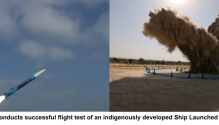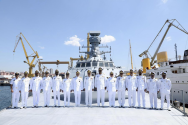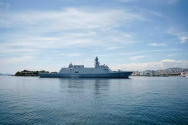Since 2015, the Pakistan Navy (PN) has moved away from its legacy reliance on midget submarines and adopted a comprehensive three-tiered approach to build and modernize its submarine fleet, the core of Pakistan’s maritime defense. This strategy comprises the following elements:
- Mid-Life Upgrades (MLUs) of 3 AIP-capable Agosta 90B submarines (via STM, Turkey)
- Acquisition of 8 modern conventional submarines (SSKs), specifically the Type 039B (Hangor-class)
- Strong interest in acquiring lightweight air-independent propulsion (AIP) shallow-water submarines (SSPs) to replace legacy midget subs (e.g., STM 500 or Fincantieri S1000)
As of now, PN has completed the MLUs of all 3 Agosta 90Bs, significantly enhancing their combat and sensor capabilities. The first Hangor-class (Type 039B) submarine is expected to join the fleet shortly, with the second already undergoing sea trials. The remaining 6 units are at various stages of construction.
On the SSP front, the PN is reportedly in the advanced stages of selecting a design for its new shallow-water submarines, with Fincantieri’s S1000 emerging as a frontrunner.
Additionally, there is considerable speculation within PN circles regarding growing interest in the under-development Type 41, a conventionally (Nuclear ??) powered submarine with SSN-like endurance and performance (SSK-N).
The decision makers viewed this design as an ideal addition to the future force due to its potential to fulfill the "heavy" tier of the three-layered strategy. More importantly,
Type 41 presents a cost-effective alternative to acquiring a full-fledged SSN enabling PN to maintain a credible counter to the expanding Indian Navy SSN fleet,
without incurring the political and financial burden associated with nuclear submarine programs.
The envisioned future submarine force structure of PN is expected to align across three distinct tonnage categories
Light, Medium, and Heavy, each offering specialized operational capabilities:
- S1000 – Shallow-Water AIP Submarine (SSP) – Light (6-9 subs)
- Agosta 90Bs – AIP Submarines (SSK) – Light/Medium (3 subs)
- Type 039Bs (Hangor-class) – Modern AIP Submarines (SSK) – Medium (8 subs)
- Potential Type 41 (SSK-N) – Advanced Conventionally-Powered (Nuclear ??) Submarine – Medium/Heavy (Numbers - ??)
This layered composition provides PN with a flexible, survivable, and regionally credible undersea deterrent across multiple operational domains, shallow littoral waters, open seas, and potentially, extended endurance patrols.
It appears that PN is not only seriously interested in the
S1000 program but also keen to finalize the deal soon. If the agreement is signed in the near term, full induction of the S1000-class submarines could take place within the next 4–5 years. PN is reportedly planning to acquire
between 6 - 9 such submarines, significantly enhancing its shallow-water and littoral warfare capabilities.






